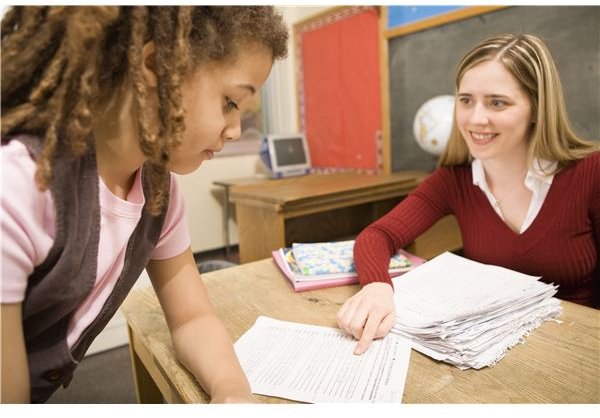Activities for Teaching Poetry to Elementary Students
Teaching over the Whole Month
Regardless of when Poetry Month is celebrated, plans for an entire month of activities should begin as soon as possible. While the
activities are for classroom participation, it is possible to incorporate them into an entire school observance. However, school principals will want to give classroom teachers an opportunity to gather resources and dispel preconceived notions of the difficulty in teaching poetry. A professional development day dedicated to teaching different forms of poetry could be scheduled prior to Poetry Month.
Poetry Activities
Grades PreK-1:
Rhyming Circle
Students sit in a circle, taking turns saying a word that rhymes with the word the teacher assigns. When a student recites the correct rhyming word, the ball will be rolled to them. The student with the ball then says a word for another student to rhyme, and so on, as the ball rolls back and forth across the circle. For example: Teacher - cat, Student 1 - mat. Student 1 receives the ball. Student 1 - big, Student 2 - wig, and so forth.
A variation of this game is to pass the ball around the circle with each student rhyming the original word. When a student can no longer rhyme, they give the ball back to the person before them, that person presents a new word (teachers can help if needed), and then, passes the ball to the next student.
Grades 1-3:
Five Senses Poem
The teacher suggests a list of familiar objects to write about in the creation of their Five Sense Poems, and then each child selects the topic they want to write about and completes the following template.
·Title (Name of Object)
·Line 1 -Looks like . . .
·Line 2 -Sounds like . . .
·Line 3 -Smells like . . .
·Line 4 -Tastes like . . .
·Line 5 -Makes me feel like . . .
Grades 2-5:
Nonsense Poems
After reading some nonsense poems aloud, like Shel Silverstein’s, Runny Babbit, the children are asked to discuss which words are real and which are made up. The children are then asked to create their own poems using real and made-up words. To simplify the process the teacher or parent can start by making up the first line of the poem or giving the students a few made-up words.
Grades K-5:
Students in grades K-5 will also enjoy creating Name Poems, Haiku, and Lanterns. Students do not have to be exact in rhyming or form, the important thing is to have students expressing themselves poetically. Becoming proficient in form and rhyme can come later, as the student matures as a writer.
Use famous art as prompts for students to write their original poems. This not only promotes art appreciation, but also develops their language art skills.
End-of-Month Activities
Culminate National Poetry Month with a Poetry Extravaganza. Host a Poet’s Day in which students can dress up as his or her favorite poet or come as poet. Students will need to research their poet in order to be able to answer simple questions, such as, “Where did you live?” “When did you start writing poetry?” or “What is your favorite poem?”
Invite local poets to come to the school/classroom. Ask the poets to share their poetry with the children. Note: These poets do not have to be children’s poets; however, they should try to read a poem that creates images that children will understand. If their own poetry is too adult in nature, ask them to read their favorite children’s poem.
Display students’ poems around the school. Have the art teacher collaborate with classroom teachers by having the students illustrate poems they wrote, or write poems in response to a famous work of art.
Contact the local newspaper to request coverage of the event well in advance. Ask if they will print some of the best poems. Some local newspapers will actually do a full-page special with pictures and text.
Have students create invitations to attend the event to send to family and friends.
References
-
References:
Content from author’s own experience.
Resources:
- Poetry 4 Kids, Kenn Nesbitt, 2008.
- A Note Slipped Under the Door, by Nick Flynn/Shirley McPhillips, Stenhouse Publishers (January 1, 2000) is a well-written “how to teach poetry” book with a great format for creating lesson plans based on poems young children love.
- Word Weavings: Writing Poetry with Young Children by Shelley Tucker, Good Year Books (April 01, 1997) This book contains writing prompts, exercises and art activities designed to help young children use poetic elements found in their everyday conversations, like metaphors and similes, to compose their own poetry.
